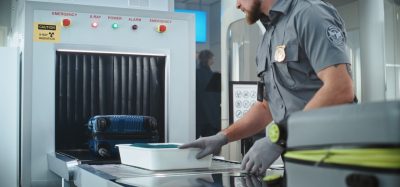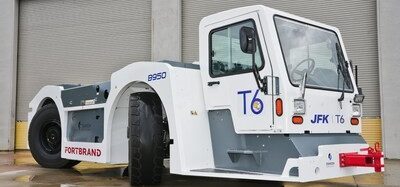In-Depth Focus: Safely maximising airport capacity
Posted: 31 May 2017 | Bob Graham, Matthis Birenheide, Tony Licu | No comments yet
Capacity is at the heart of an airport’s schedule and planning, and with air traffic figures continuing to rise airports are under growing pressure to increase their capacity within existing infrastructure limits. EUROCONTROL’s Matthis Birenheide, Bob Graham and Tony Licu reveal some of the initiatives currently being used in Europe and the U.S. to balance operational capacity and safety.


In aviation, the highest levels of safety are a pre-requisite; this is true across the sector, including at airports, which are important nodes of the air traffic management (ATM) network. However, high levels of safety may have an associated cost, both financial and also in terms of operations. It is a continuing challenge for operational managers to justify the implementation of new or additional safety features, together with their associated costs. They may well be asked questions on the costs and when they will see a return on their investment. It is a real challenge to quantify enhanced levels of safety and to assess their financial benefits.
Now let’s have a look at this from another angle. Traffic is growing again and it is vital for any airport that its capacity should exceed demand (or at least equal it); if not, then delays or even cancellations start to happen. Often capacity is constrained by the difficulties of developing new infrastructure, such as runways, taxiways or stands. Investment in new infrastructure is a lengthy and expensive process, which can easily take 10 years or more – and with no guarantee of success. As a result airports are especially interested in maximising their capacity within the existing infrastructure limits. This has to be done while maintaining high levels of operational safety. On some occasions the challenge is to maintain capacity as a result of increased levels of safety, perhaps arising from new regulations.
Capacity is at the heart of an airport’s schedule and planning and the starting point for capacity planning typically relates to standard operating conditions. That means good weather, the preferred runway configuration, and so on. It is easy to see where this is heading. If operating conditions are not optimal, then this has a negative impact on capacity. Where the airport is operating at levels near to its theoretical capacity (and, as traffic grows, more and more airports are expected to be operating close to capacity for more and more of the time), then any disruption results in delays, both for the airport and also for the network as a whole. These delays have a significant cost, thus reinforcing the need to maximise capacity while at the same time maintaining or even increasing safety levels.
Particular safety challenges associated with maximising capacity
Air traffic controllers are on the front line when it comes to the delicate balance of maintaining, or indeed increasing, operational capacity and safety. Controllers are often required to make rapid decisions, for example on whether an aircraft should go around because the runway is still occupied. Go arounds not only are expensive and unpopular, they also reduce the available capacity. However, they may be necessary if it is unsafe to continue the approach. The picture can be further complicated if the runway configuration is not optimal from a capacity point of view, perhaps because of local noise abatement or environmental concerns. These additional demands on the controllers make it a challenge to maintain the agreed landing and take-off rates.
Techniques such as the use of conditional clearances (which allow aircraft to enter or cross a runway behind another departing or landing aircraft a few seconds earlier than would normally be the case) can help keep the traffic flowing freely and, over time, allow additional movements to be squeezed into the tight schedule. However, analysis of European air navigation service providers’ runway incursion data shows that this type of clearance, if not used correctly by the controller and followed meticulously by the pilots, can contribute to serious runway safety events. As a result, in some airports conditional clearances are not used or are even prohibited.
This analysis of runway safety data has been used by the EUROCONTROL Network Manager Safety Unit to compile a series of Operational Safety Studies. These studies cover landing without ATC clearance and the controller’s ability to detect that the active runway is already occupied, as well as the potential for sudden high energy runway conflicts. In certain circumstances, these are stark reminders that maintaining safe runway operations in dynamic, complex scenarios is extremely demanding for both pilots and controllers.
Fortunately, we are now seeing more widespread use of emerging technologies such as automatic warnings to controllers of conflicting clearances and advanced surface movement guidance and control systems (A-SMGCS) (and associated safety nets). More aerodromes are also adopting the use of stop bars H24 as a means to reduce the incidence of runway incursions. These are a powerful safety tool and capacity enhancer, all based on the key messages – consistently highlighted in the EUROCONTROL operational safety studies – that pilots should never cross red lit stop bars and controllers should not give clearances to cross illuminated stop bars.
Advances in technology and automation are not confined to the control tower. On-board aircraft systems that provide pilots with their position on the aerodrome can help them improve their situational awareness. Vehicles are also increasingly being fitted with transponders so that they can be more accurately tracked (by A-SMGCS) on the aerodrome. However, on-board guidance is not yet widely available; nor is there a ground collision avoidance system similar to the airborne ACAS (TCAS).
Instead, autonomous runway incursion warning systems (ARIWS) such as runway status lights (installed and operational at Paris CDG since June 2016) can provide direct warnings to pilots and drivers (with no controller input) if they are about to encroach onto, or take-off from, an occupied runway. Systems such as ARIWS are, however, expensive and complex and not suitable for every aerodrome. They would certainly need to be subject to rigorous cost (safety/capacity) benefit analysis.
Other means available that can help to maximise airport capacity safely
New technology is being deployed in Europe to address capacity-constrained runways. This will be accomplished by improving controller productivity and addressing the impact of aircraft wake on separation minima, as well as the influence of meteorological conditions such as strong winds.
One procedural solution is RECAT – re-categorisation of wake separations on final approach and departure. Over the last 10 years, Europe and the U.S. have undertaken research to better understand the wake phenomenon, how it is generated, how it dissipates and how an aircraft reacts to a wake impact. The result of this research, RECAT, is a six category separation scheme replacing the traditional ICAO Light, Medium and Heavy category system. RECAT is currently being deployed in the U.S. and Europe, with airports in Asia and the Middle East preparing for deployment in order to benefit from increased throughput.
RECAT can generate a throughput increase of up to 8% throughput with reasonable costs – related to human machine updates and controller training. RECAT not only improves throughput but reduces instances of approach separations being too small; it provides additional resilience contributing to safety.
For dense runway operations, the use of Time Based Separation (TBS) is a major development with the potential to be a ‘game changer’. Initially proposed by EUROCONTROL to mitigate head wind conditions and the associated delay, TBS ensures predictable separation for runways that cater for significant traffic demand with a majority of ‘heavy’ aircraft types (such as B777, B747 and A380) which are significant generators of wake vortex.
TBS, developed within the context of SESAR and deployed at London Heathrow, also manages the compression effect of aircraft reducing speed in preparation for landing. Furthermore, the implementation of TBS includes safety features that warn the controller where a “catch-up” situation occurs. Whilst TBS has particular benefit in reducing delay due to strong headwinds, it also supports increased throughput in low wind conditions.
What is more exciting is that the next RECAT product, RECAT Pairwise (developed by EUROCONTROL in SESAR and currently under safety assessment by EASA), will further reduce separation minima between pairs of aircraft that can be incorporated into TBS, bringing throughput improvements of up to 12% for some runway configurations.
More improvements are on the way. Gatwick Airport achieves remarkable throughput of up to 56 movements per hour on a single runway, primarily by understanding performance from a data perspective. Greater data availability opens the door to ‘big data’ tools that will support better understanding of runway operations, resulting in further safe improvements to runway throughput.
Changes in reporting of runway friction coefficients will soon be deployed and will be linked with on-board systems such as Airbus’s ROPS (Runway Overrun Prevention System) that predicts the safe landing distance and, in some circumstances, manages runway braking. This product is already available in different iterations on the A380, the A350 and the A320 family.
Of course, protecting the runway from the unexpected is critical to increasing the capacity of existing runways. Systems such as the runway status lights deployed at Paris CDG and the next level of A-SMGCS (proposed by the SESAR Deployment Manager) will support further safe reductions in separation minima and will bring more capacity benefits to airports. There is often a conflict between safety and capacity but there is the potential to improve both.
Biography






The International Airport Summit is open for registration!
Date: 19 – 20 November 2025
Location: JW Marriott Hotel Berlin
At our flagship event of the year, we will dive into the future of airport operations, with expert-led sessions on passenger experience, innovative smart technologies, baggage handling, airside operations, data, security, and sustainability.
This is where global airport leaders come together to share insights, challenges, and real-world solutions.
Limited complimentary passes are available for eligible professionals – first come, first served!
Related topics
Airport construction and design, Airport development, Capacity, Passenger volumes


















